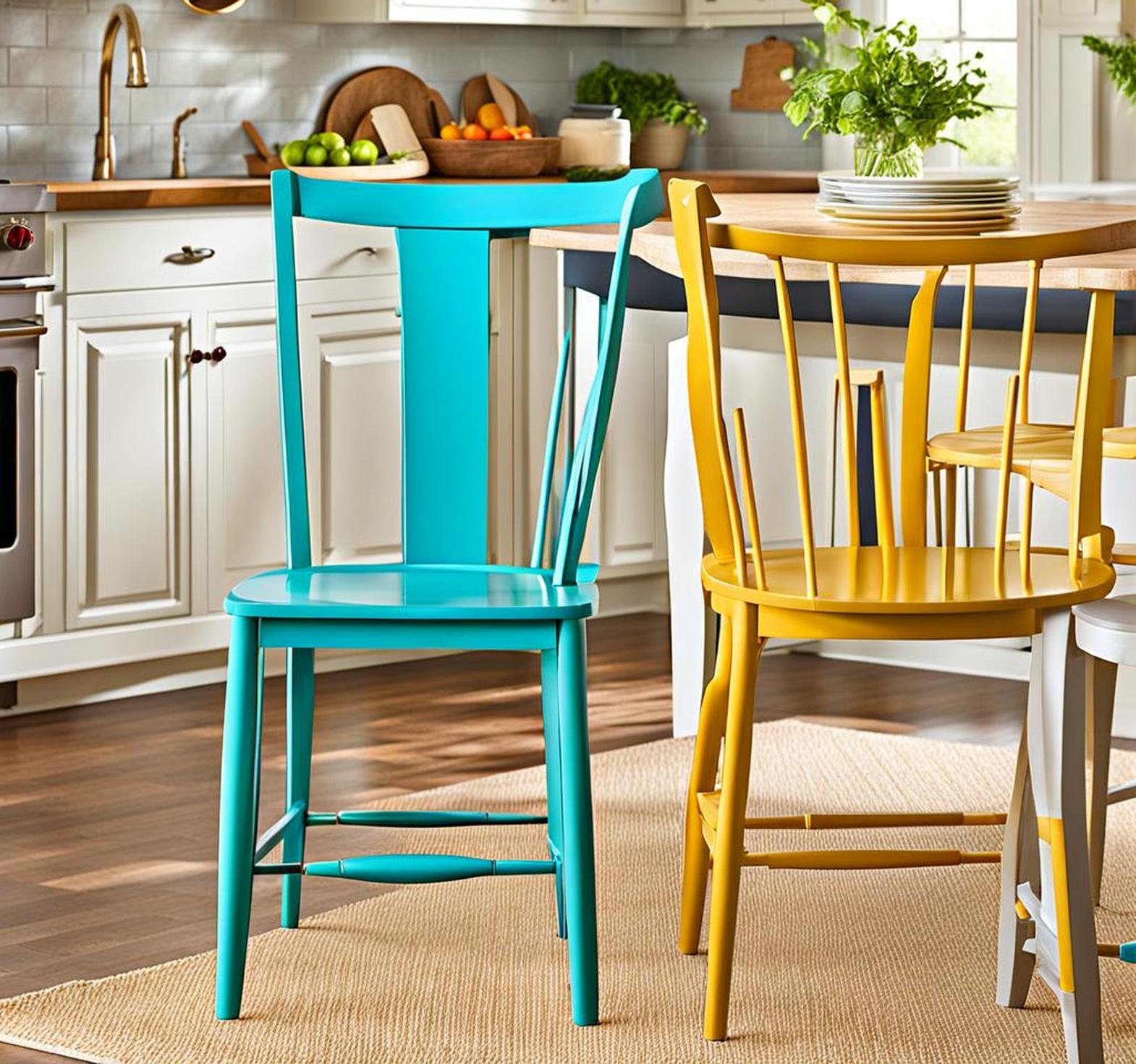With the constant use of kitchen chairs, choosing a paint that delivers maximum longevity along with a smooth finish can be a challenge. We want to ensure our kitchen chairs maintain quality, long-lasting appearance that resists chips, scratches, and overall wear from regular use and potential spills over time.
Why Proper Paint Selection For Kitchen Chairs Matters
The kitchen is often referred to as the heart of the home and serves as a high-traffic area for family and friends. Kitchen chairs undergo far more frequent use than typical home furnishings. From daily meals to social gatherings, kitchen chairs face sizable wear and tear.
An inferior paint that lacks sufficient durability and resilience will succumb to signs of damage much faster. We want a paint that preserves a freshly painted look for extended duration. Additionally, we want kitchen chairs to boast a smooth, even coating free of imperfections for a flawless appearance. With mindful paint selection, we can accomplish the ideal balance of form and function.
Key Factors To Evaluate When Choosing Paint
Certain considerations hold extra import when deciding which type of paint best suits kitchen chairs specifically. Focusing on these vital criteria will ensure achieving optimal long-term performance AND visual appeal.

Durability Above All
As the portion of paint enduring the most frequent physical contact and exposure to spills, durability tops the priority list. Extra durable paints better resist potential chips, cracks, and scratches — retaining quality surface and minimising upkeep.
Ease Of Application & Cleanup
From prepping to priming, painting kitchen chairs implicates considerable time and elbow grease. Complications stemming from strong fumes, tricky cleanup, or poor coverage quickly exhaust patience. Paint properties impacting ease of DIY application warrant evaluation.
Flawless Finish
Ideally, our painted kitchen chairs will showcase a smooth, even coating — devoid of globs, drips or visible brush strokes marring aesthetic appeal. Factoring sheen level, thickness of application and drying time allows for a flawless finished product.
How Different Paint Types Compare For Kitchen Chairs
Now equipped with our pivotal criteria for kitchen chair paint, how do popular paint options stack up?
Oil-Based Alkyd Paint
- Pros: Hard, ultra durable finish resists damage exceptionally well. Ideal uniformity of sheen.
- Cons: Strong odor during application, tricky cleanup requiring mineral spirits/thinners.
Water-Based Acrylic Latex Paint
- Pros: Low odor, water cleanup, quick dry times. Environmentally-friendly.
- Cons: Less durable than oil-based, requires primer for ideal adhesion.
Water-Based Enamel Paint
- Pros: Higher durability than standard latex, still easy soap/water cleanup.
- Cons: Generally less durable than oil-based alternatives, pricier.
While oil-based reigns supreme for durability, drawbacks like rigorous prep/cleanup and noxious fumes may dissuade DIYers. Thus, water-based enamel proves an optimal compromise — fused with durability exceeding standard latex paint, maintaining far easier application.
| Paint Type | Durability | Ease of Use | Finish Quality |
|---|---|---|---|
| Oil-Based | Excellent | Difficult | Excellent |
| Latex | Fair | Excellent | Good |
| Enamel | Very Good | Good | Excellent |
Achieving Flawless Results Painting Kitchen Chairs
Meticulous prep and painting best practices set the stage for superlative, long-lasting results.
Proper Preparation Makes Perfect
Thorough prep removes grime or deteriorating previous paint interfering with ideal adhesion. Lightly sanding smooths the surface, then wipe clean.
Priming immediately before painting additionally bolsters bonding and conceals flaws. Oil-based alkyds best seal existing finishes, while water-based acrylic works well with bare wood.
Attentive Paint Application
Mind technique utilizing high quality brushes cut down on drips marring finish uniformity. Maintain consistent painter’s motion and angle across all chair surfaces and components for cohesive appearance.
Adhere to prescribed drying times between coats, impacted by humidity/ventilation. Cool, dry conditions keep fresh paint from drying too rapidly and unevenly.
Calculating Necessary Amounts
Underestimating requisite quantity leaves our chairs half-finished. Determine total chair surface area, factoring slats, spindles, frames and any embellished details. Quantify paint required for adequate film thickness per coat.
Most quality paints provide spread rate guidance per gallon. Multiple by total area then divide by spread rate to gauge needs. Don’t forget second/third coats!
The finest quality kitchen chair paint applied properly must withstand rigors of busy household use for prolonged duration before exhibiting signs of wear – thanks to merciless bonding to the surface beneath.
Yet no paint proves 100% impervious to damage. Periodic inspection highlights scratches or dings needing a touch up restore original beauty.
When the inevitable time arrives for whole chair redo, the existing durable coating sands smooth easily to permit simple, spotless reapplication — saving the heavy lifting of completely stripping old paint first.
Stay committed to following best practices from start to finish, and your painted kitchen chairs will deliver flawless, resilient results for years of enduring use ahead.
